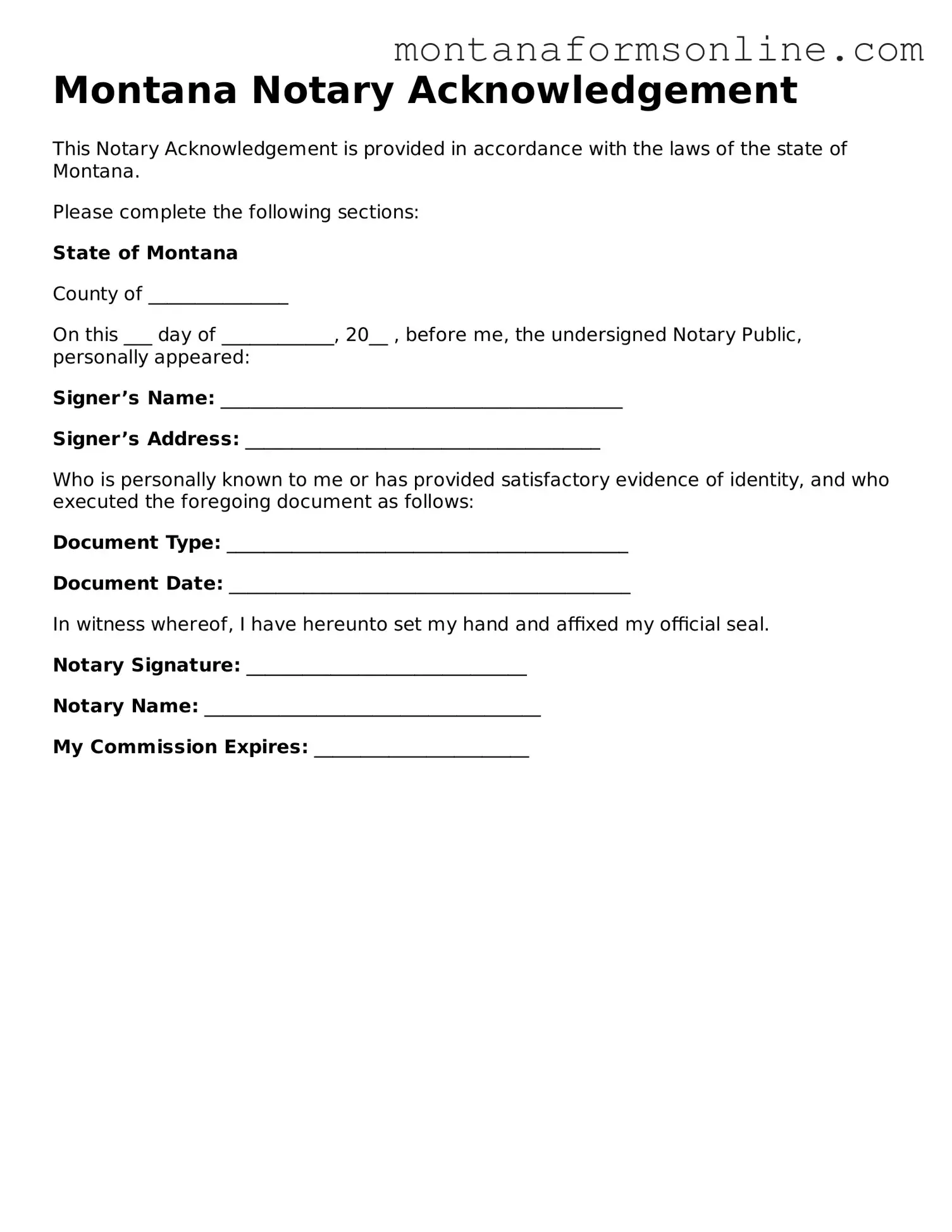Fillable Montana Notary Acknowledgement Template
The Montana Notary Acknowledgement form is a crucial document used to verify the identity of individuals signing important legal papers. This form serves as a safeguard, ensuring that the signatures on documents are genuine and that the signers are acting voluntarily. Understanding its purpose and proper usage can help streamline various legal processes.
Modify Document
